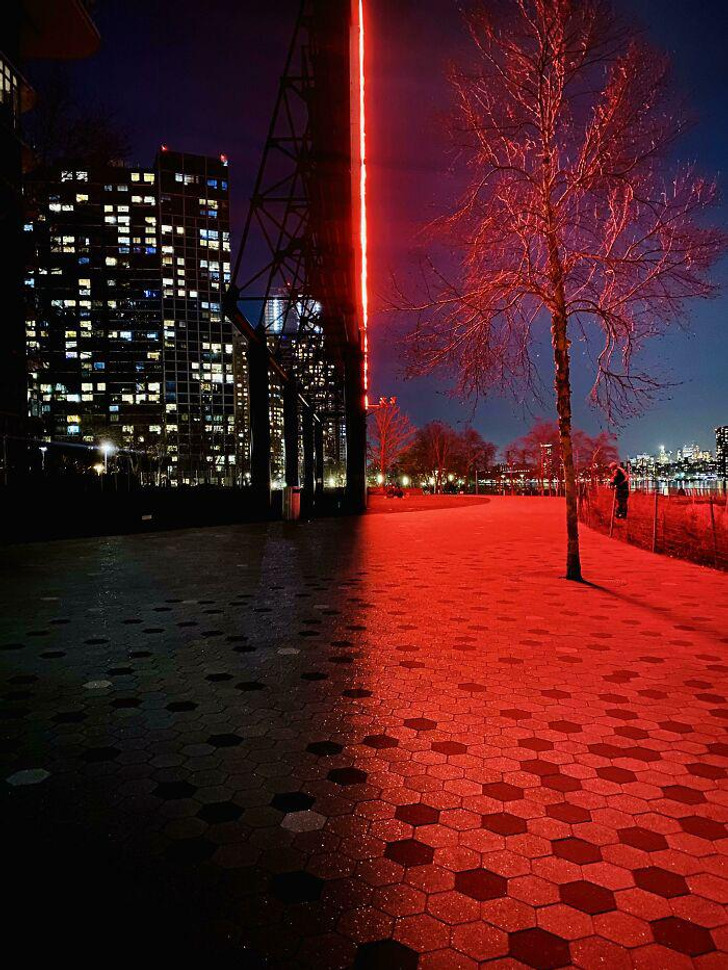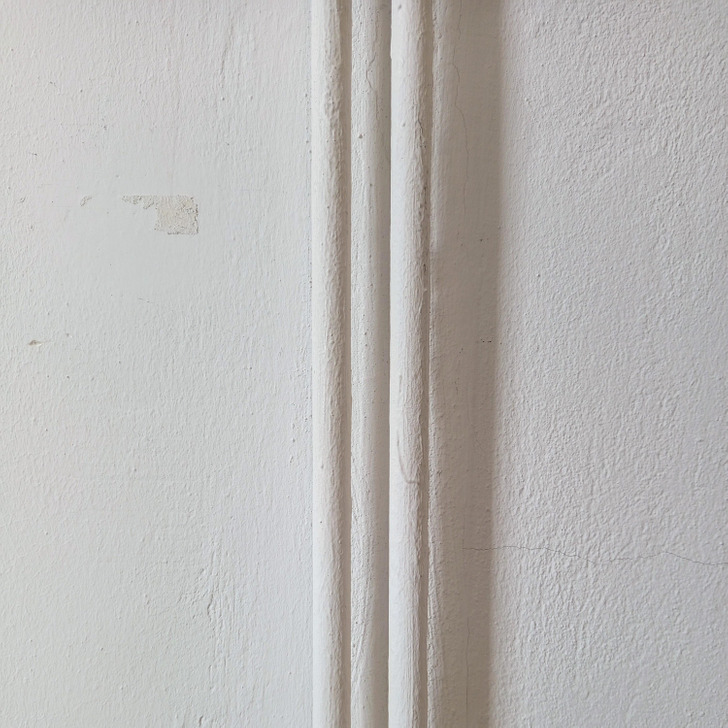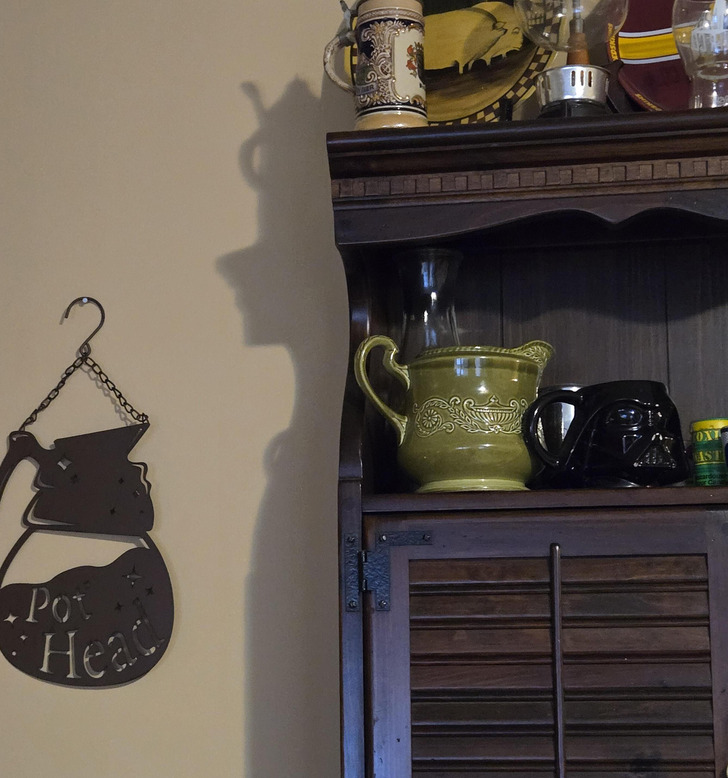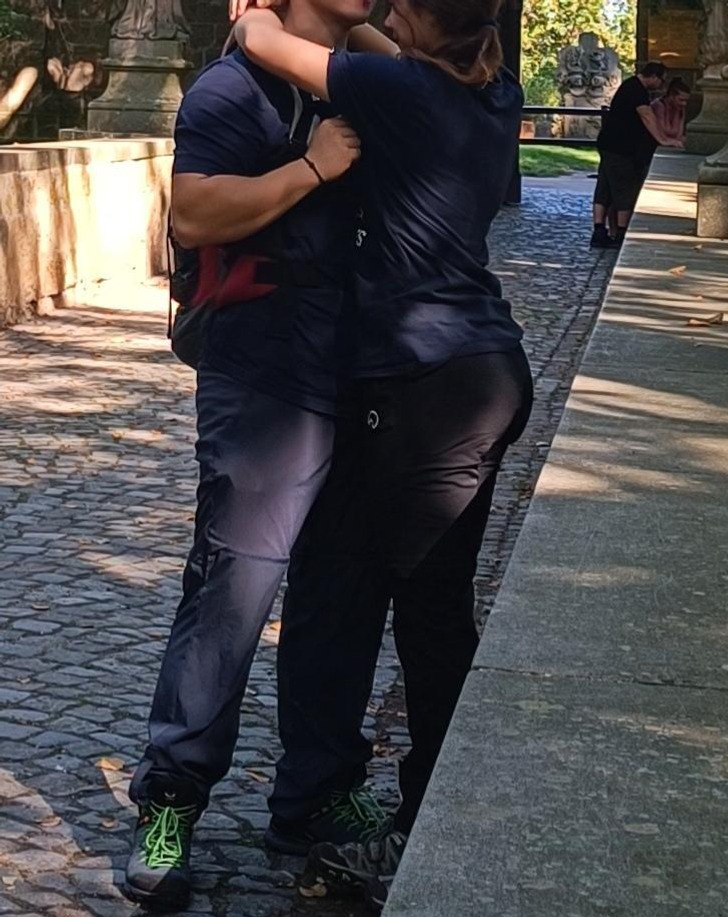An everyday object can go from normal to totally confusing with a shift in perspective. It might feel like your brain messes with you, but it’s just a confusing perspective hiding the full picture. The cool part is when photographers capture these wild illusions and share them online, giving our brains a fun little workout.
1. “My nephew is half dog half boy.”

2. “I got that dog in me.”

3. “Side view of the Pepsi-Cola sign at night in Queens, NYC.”

4. “My friend posted a new profile pic with her boyfriend, and everyone took a double take.”
5. “This snow angel appears to be coming out of the snow.”


7. “Brother-in-law having a nap.”

8. “I thought I was witnessing a plane crash a few minutes ago.”

9. “Let me just set this tool down.”

10. “Dad saw the circle on the tablecloth and thought it was a plate.”

11. The shadow definitely looks like a person.

12. “Found this picture of me and my girlfriend. Where is her foot?”

13. “My friend’s dog looks like it has three hands.”

14. “My dad in the green pants is taller than person to the right of him.”

15. “Took my helmet off to let my hair breathe.”

Photographers, both amateur and professional, have long been fascinated by the way perspective can manipulate visual understanding. When these illusions are captured and shared online, they create a fascinating experience that challenges viewers to rethink what they believe they are seeing. These images serve as more than just entertainment; they highlight the complexities of human perception and cognitive processing.
How Perspective Creates Optical Illusions
Many illusions occur due to forced perspective, a technique often used in photography, cinematography, and even architectural design. By adjusting the angle, distance, or scale of an object, photographers can create misleading or ambiguous images that defy our usual expectations. For instance, a person standing far behind another in a photo may appear to be sitting on their shoulder, or an object close to the camera may seem disproportionately large.
In some cases, our brains fill in missing information based on past experiences and assumptions. This phenomenon, known as perceptual expectancy, explains why certain illusions appear obvious once we understand the trick behind them. Our brains rely on patterns and context to interpret visual stimuli, and when perspective disrupts those expectations, it can lead to fascinating visual effects.
Famous Examples of Perspective-Based Optical Illusions
- The Floating Object Illusion – A shadow positioned just right can make an object appear as if it’s floating above the ground, creating an uncanny sense of defying gravity.
- The Giant and the Tiny Person – When one subject is much closer to the camera than another, the contrast in scale can make it seem as if one person is significantly larger than the other, even though they are just standing at different distances.
- Camouflage and Hidden Figures – In nature photography, animals often blend seamlessly into their environments, making it difficult for viewers to spot them at first glance. This kind of illusion showcases the incredible adaptability of wildlife and the importance of perspective in recognition.
- Mirrored Reflections That Trick the Eye – Certain reflections create illusions where objects appear duplicated, missing, or distorted. For example, a perfectly still lake may reflect a scene so precisely that it’s difficult to distinguish reality from reflection.
- Buildings That Appear to Defy Gravity – Architectural designs that incorporate extreme angles or misleading lines can make structures appear as if they are tilting, floating, or impossibly constructed.
Why Our Brains Love Visual Puzzles
The human brain is wired to seek patterns and make sense of the world efficiently. When faced with an image that contradicts our expectations, the brain goes into problem-solving mode, trying to resolve the ambiguity. This is why perspective-based illusions are so captivating—they provide a mental challenge that forces us to engage our cognitive skills in an enjoyable way.
Additionally, illusions demonstrate the adaptability of human vision. The way we interpret an image depends on factors like lighting, contrast, and surrounding objects. A single perspective shift can completely alter our understanding of an image, emphasizing the importance of context in perception.
The Role of Technology in Capturing Optical Illusions
With the rise of high-quality smartphone cameras and digital editing tools, capturing and sharing perspective illusions has never been easier. Social media platforms allow photographers to share their mind-bending images instantly, leading to viral discussions and challenges where users try to decipher the tricks behind the photos.
Moreover, advancements in augmented reality (AR) and virtual reality (VR) technology are taking perspective illusions to new heights. By immersing users in digitally altered environments, these technologies offer first-hand experiences of how easily our perception can be influenced by controlled perspectives.
Conclusion
Perspective is a powerful tool that shapes the way we perceive and interact with the world. Optical illusions remind us that seeing is not always believing, and that our brains are constantly working to make sense of the visual information we receive. Whether captured intentionally by photographers or discovered by accident, these fascinating tricks of the eye provide endless entertainment and insight into the complexities of human cognition.
So the next time you see an image that confuses your brain, take a closer look—you may just be witnessing the magic of perspective at work!
